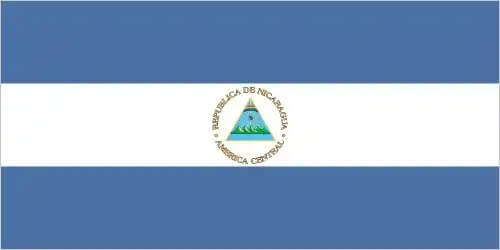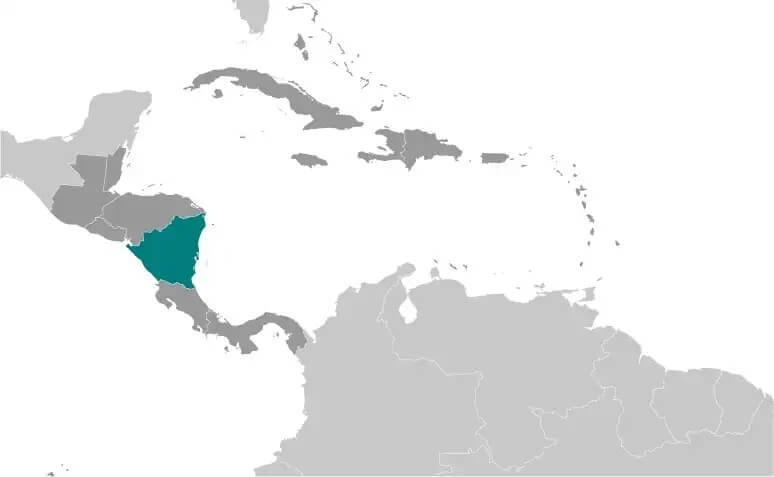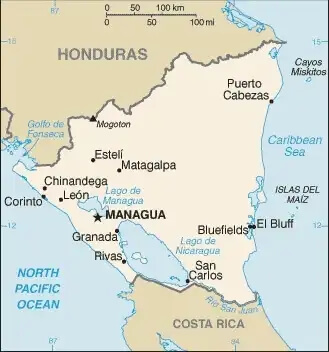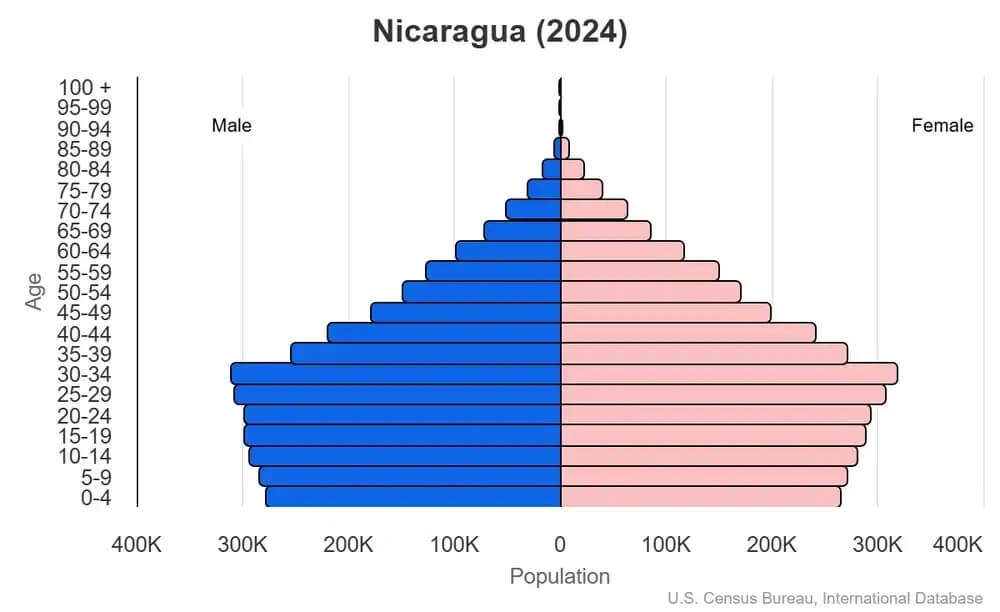World Book
Nicaragua
World Book Index
68


With a score of 68, the country is ranked 74th out of 158 countries in the World Book ranking. (more information)
Introduction
Background
The Pacific coast of Nicaragua was settled as a Spanish colony in the early 16th century. Independence from Spain was declared in 1821, and the country became an independent republic in 1838. Democratic institutions have weakened as the president has assumed full control over all branches of government.
Geography
Area
total : 130,370 sq km
land: 119,990 sq km
water: 10,380 sq km
Climate
tropical in lowlands, cooler in highlands
Natural resources
gold, silver, copper, tungsten, lead, zinc, timber, fish
People and Society
Population
total: 6,676,948 (2024 est.)
Ethnic groups
Mestizo (mixed Indigenous and White) 69%, White 17%, Black 9%, Indigenous 5%
Languages
Spanish (official) 99.5%, Indigenous 0.3%, Portuguese 0.1%, other 0.1% (2020 est.)
Religions
Roman Catholic 44.9%, Protestant 38.7% (Evangelical 38.2, Adventist 0.5%), other 1.2%, (includes Jehovah's Witness and Church of Jesus Christ), believer but not belonging to a church 1%, agnostic or atheist 0.4%, none 13.7%, unspecified 0.2% (2020 est.)
Population growth rate
0.95% (2024 est.)
Government
Government type
presidential republic
Capital
name: Managua
Executive branch
chief of state: President Jose Daniel ORTEGA Saavedra (since 10 January 2007)
head of government: President Jose Daniel ORTEGA Saavedra (since 10 January 2007)
Diplomatic representation in the US
chief of mission: Ambassador (vacant); Chargé d'Affaires Sammia Alicia HODGSON MCKENZIE (since 3 June 2025)
Diplomatic representation from the US
chief of mission: Ambassador (vacant); Chargé d’Affaires Kevin Michael O'REILLY (since 28 June 2023)
Economy
Economic overview
low-income Central American economy; until 2018, nearly 20 years of sustained GDP growth; recent struggles due to COVID-19, political instability, and hurricanes; significant remittances; increasing poverty and food scarcity since 2005; sanctions limit investment
Real GDP (purchasing power parity)
$52.989 billion (2024 est.)
$51.153 billion (2023 est.)
$48.985 billion (2022 est.)
Real GDP per capita
$7,700 (2024 est.)
$7,500 (2023 est.)
$7,300 (2022 est.)
Exports
$8.135 billion (2024 est.)
$8.248 billion (2023 est.)
$7.87 billion (2022 est.)
Exports - partners
USA 51%, Mexico 12%, El Salvador 6%, Canada 6%, Switzerland 4% (2023)
Exports - commodities
garments, gold, insulated wire, coffee, beef (2023)
Imports
$11.437 billion (2024 est.)
$10.519 billion (2023 est.)
$10.213 billion (2022 est.)
Imports - partners
USA 24%, China 13%, Mexico 9%, Honduras 9%, Guatemala 8% (2023)
Imports - commodities
garments, refined petroleum, crude petroleum, plastic products, fabric (2023)
Human Development Index
The country's Human Development Index (HDI) is 0.706, ranking it 123rd out of 193 countries tested. (more information)
World Happiness Report
The World Happiness Report ranked the country 27th out of 158 countries tested with a score of 6.609. (more information)



